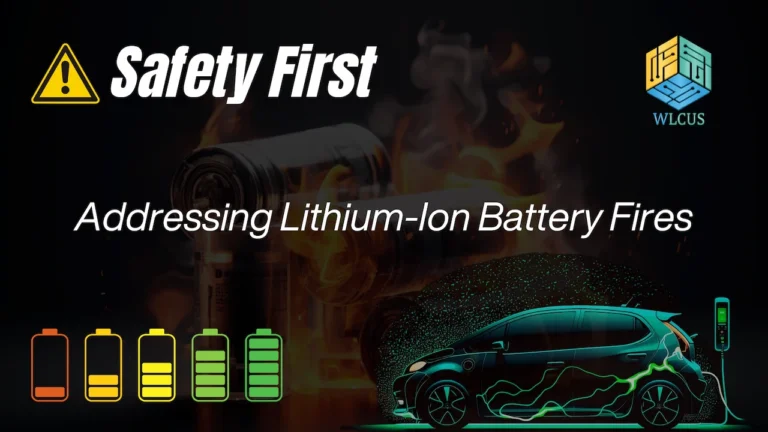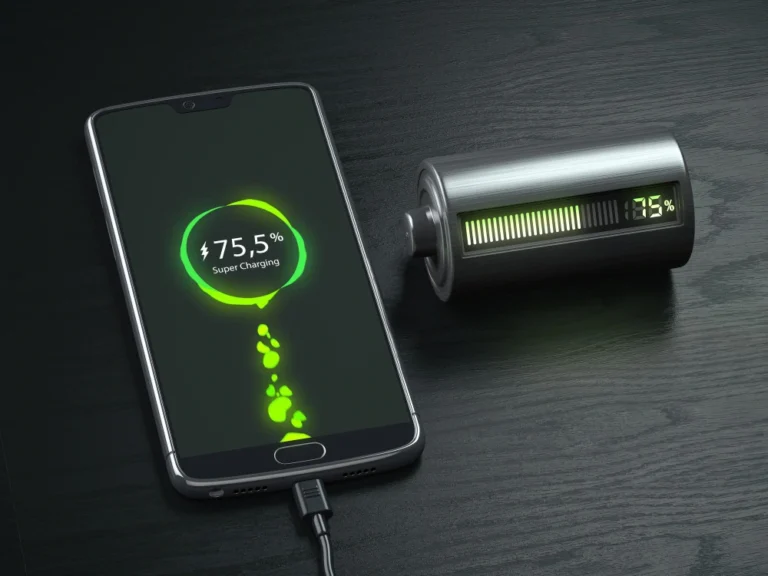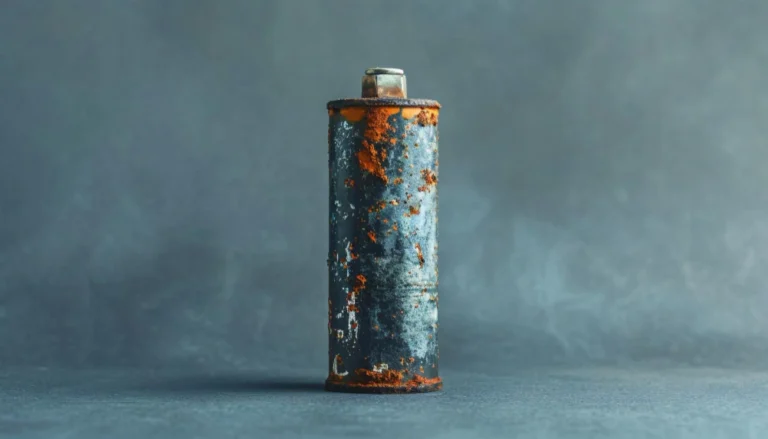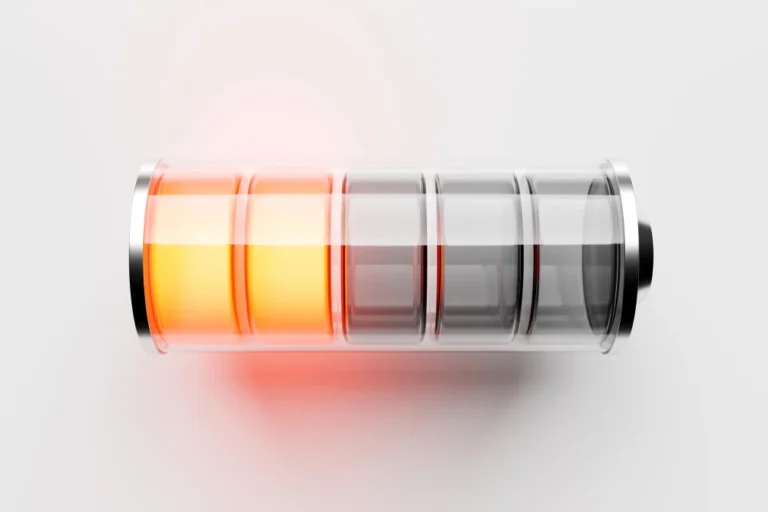Safety First: Addressing Lithium-Ion Battery Fires

Lithium-ion batteries are at the heart of the modern world, powering everything from smartphones and laptops to electric vehicles and renewable energy storage systems. While these batteries offer incredible performance and convenience, they come with a hidden danger: fire risks. The stakes are high, with incidents ranging from residential fires to emergency situations on airplanes. As we continue to rely on lithium-ion batteries in more aspects of our lives, it’s crucial to address the safety concerns that come with them.
In this blog, we’ll explore the dangers associated with lithium-ion batteries, what’s being done to mitigate these risks, how workers can stay safe, and the importance of safety measures both for those handling these batteries and industries as a whole.
The Growing Risk of Lithium-Ion Battery Fires
Lithium-ion batteries have revolutionized energy storage, offering long-lasting power and fast charging. However, when these batteries are improperly handled or damaged, they can overheat and lead to fires or even explosions. These risks are especially significant in high-demand sectors like residential use, transportation, and air travel, where the consequences of a battery fire can be catastrophic.
The Science Behind Lithium-Ion Battery Fires
Lithium-ion batteries are highly efficient due to the chemical reactions that occur within them. However, if a battery is overcharged, exposed to extreme temperatures, or physically damaged, it can lead to a thermal runaway. This process results in rapid temperature increases that can cause fire or explosion.
The Key Factors behind Lithium-Ion Battery Fires
1. Overcharging:
Using unapproved chargers or faulty charging equipment.


2. Physical Damage:
Dropping or puncturing a battery can disrupt its internal structure, or charging a corroded battery can cause a short circuit or explosion.
3. Overheating:
Batteries used in high-temperature environments or exposed to fire-prone conditions can become unstable.

Innovative Solutions: Reducing Fire Risks
To counter the growing concern of lithium-ion battery fires, experts are working on innovative technologies and strategies to improve battery safety. These solutions focus on enhancing battery design and developing protective materials to mitigate risks.
1- Liquid-Applied Fire Protection Coatings
One of the latest advancements in battery safety involves liquid-applied fire protection coatings. These coatings are designed to be applied to the surface of lithium-ion batteries to provide an additional layer of protection against heat buildup. By absorbing excess heat and preventing the spread of flames, these coatings can significantly reduce the chances of a fire occurring. These fire-resistant coatings are developed by companies specializing in fire -protection solutions, offering materials that enhance battery safety in high-risk environments.
2- Thermoresponsive Separators
Another promising technology involves the development of thermo-responsive separators. These are materials that can automatically react to rising temperatures by changing their structure. When the temperature inside a battery becomes too high, these separators can expand, effectively cutting off the flow of energy and preventing the thermal runaway process that leads to fires. Solution providers specializing in battery components and material science are actively working to create these smart separators to enhance lithium-ion battery safety.
3. Safer Alternatives: Water-Based Batteries
While lithium-ion batteries remain dominant, water-based batteries are emerging as a safer alternative. These batteries, which use water as the electrolyte, are less prone to thermal runaway and fires. While water-based batteries are still in the early stages of development, they hold significant promise for energy storage solutions that prioritize safety without sacrificing performance. Energy storage companies are researching and developing water-based battery systems that could eventually change Lithium-Ion Technology in some Applications.
Solution Providers: Leading the Charge in Battery Safety
As the demand for safer, more reliable lithium-ion batteries increases, several solution providers are stepping up to offer cutting-edge technologies and safety systems. These solution providers play a critical role in reducing fire risks and ensuring that industries can adopt lithium-ion technology without compromising safety.
1. Fire Protection Coating Providers
Companies like Pyroshield, 3M, and Sherwin-Williams are leading the way in the development of fire-resistant coatings. Their products help create an additional layer of protection that can absorb heat, preventing fires from spreading and mitigating the risks of thermal runaway. These solutions are being adopted in industries ranging from electronics to electric vehicle manufacturing to enhance the safety of lithium-ion batteries.
2. Battery Component Manufacturers
Manufacturers like Sonneborn and Solvay are producing advanced thermo-responsive separators -and other battery components designed to prevent the overheating that leads to battery fires. Their products help increase the thermal stability of batteries, providing a passive safety mechanism that can prevent hazardous incidents before they occur.
3. Water-Based Battery Developers
Aquion Energy and other innovators are working on water-based energy storage solutions, which aim to provide a safer alternative to lithium-ion batteries. These companies are developing water-based batteries that are less flammable and safer for use in large-scale storage systems and transportation. As these technologies mature, they could reshape the future of energy storage.
4. Battery Safety Consulting Firms
Companies like Battery Safety Solutions and Intertek provide consulting services and safety assessments for industries that handle lithium-ion batteries. These firms help businesses develop and implement battery safety protocols, ensuring compliance with safety
regulations and reducing the risk of incidents. They also conduct training and educational programs to promote best practices for battery handling, charging, and disposal.
Best Practices: Ensuring Safe Lithium-Ion Battery Use
No matter how advanced the technology becomes, proper handling and usage of lithium-ion batteries are essential to reducing the risk of fire. Here are some best practices to ensure safety:
1. Proper Handling and Storage
- Avoid Extreme Temperatures: Keep batteries away from heat sources, including direct sunlight or areas with high ambient temperatures.
- Don’t Overcharge: Always use chargers that are approved for your specific battery type to prevent overcharging.
- Store Correctly: When storing batteries for long periods, keep them in a cool, dry place and away from any flammable materials.
2. Use Approved Chargers and Accessories
The safest way to ensure that your lithium-ion battery remains stable is to use approved chargers and accessories. Using non-certified equipment can increase the risk of overcharging and overheating, leading to potential safety hazards.
3. Update Safety Standards and Regulations
As technology advances, it’s crucial that safety standards evolve in parallel. Regular updates to safety regulations for lithium-ion batteries, including transportation and disposal methods, are vital for ensuring that the risk of incidents is minimized. Regulatory bodies and industries should collaborate to create comprehensive standards that address the latest technologies and potential hazards.
Worker Safety: How Employees Can Stay Safe
For workers handling lithium-ion batteries, safety is paramount. Here are a few key safety measures and practices that employees should always keep in mind to minimize risks on the job:
1. Wear Appropriate Personal Protective Equipment (PPE)
Workers handling lithium-ion batteries or working in environments with high fire risk should wear appropriate PPE. This can include:
- Flame-resistant clothing to protect against burns in case of a fire.
- Safety goggles to prevent eye injuries from battery leaks or explosions.
- Gloves to handle damaged batteries safely and avoid direct contact with hazardous materials.
- Face Shields for additional protection from heat, Chemicals & Debris.
2. Follow Proper Handling Procedures
Employees must be trained to follow best practices when handling lithium-ion batteries:
- Avoid Physical Damage: Always handle batteries with care to prevent punctures or dents.
- Use Approved Chargers: Ensure that batteries are only charged with manufacturer’s-approved equipment.
- Monitor Battery Temperature: Keep an eye on temperature readings during charging, and never leave batteries charging unattended.
3. Recognize Warning Signs of Battery Failure
Employees should be trained to recognize the early warning signs of a failing battery:
● Swelling or bulging of the battery case.
● Unusual heat generation or changes in battery temperature.
● Strange odors such as burning plastic or chemical smells.
In case any of these warning signs are noticed, workers should immediately report the issue and take the appropriate action as outlined in the safety protocols.
4. Proper Emergency Procedures
All workers should be trained in emergency procedures in case of a battery-related fire or explosion. This includes:
● Evacuating the area immediately if a fire or thermal runaway occurs.
● Using fire extinguishers specifically designed for lithium-ion battery fires (Class D fire extinguishers).
● Knowing first aid protocols in case of burns or exposure to hazardous materials from battery leaks.
Collaboration for a Safer Future: What Industries Can Do?
The challenges of lithium-ion battery safety go beyond individual responsibility. Collaboration between industries is crucial to ensuring that we can reduce fire risks effectively. Whether you’re in energy, tech, or transportation, everyone has a role to play.
- Energy Sector: Safer Battery Storage Solutions In the energy sector, battery storage is essential for renewable energy systems, such as solar and wind power. Energy companies should invest in fire-resistant materials for large-scale battery storage and focus on safety features like ventilation and temperature regulation to minimize fire hazards.
Technology and Electronics Industry: Safer Consumer Devices Tech companies that manufacture devices such as smartphones, laptops, and electric vehicles must prioritize safety in the design of lithium-ion batteries. This includes incorporating heat dissipation systems, internal protective circuits, and impact-resistant casings to prevent damage to the batteries.
- Transportation and Aviation: Managing Battery Risks During Transit Transportation companies, especially those involved in air travel, need to address the risk of lithium-ion battery fires during transit. Lithium-ion batteries are often shipped in bulk, and incidents on aircraft have highlighted the dangers of transporting large numbers of batteries. Airlines and shipping companies must follow strict safety procedures for handling and transporting these batteries and ensure compliance with safety standards to prevent incidents.
Prioritizing Safety in a Battery-Powered World
As lithium-ion batteries continue to power the devices and vehicles we rely on, it’s critical that safety remains a top priority. With innovative technologies such as fire protection coatings, thermo-responsive separators, and safer alternatives like water-based batteries, we are taking significant steps toward addressing the fire risks associated with lithium-ion technology.
However, while technological advancements are essential, best practices in handling, charging, and storing batteries, along with collaboration across industries, are just as important to ensure a safer future. Employees must also remain vigilant, follow proper safety protocols, and utilize appropriate PPE to mitigate risks in the workplace. By staying vigilant and working together, we can minimize risks and continue to benefit from the powerful potential of lithium-ion batteries without compromising safety.
